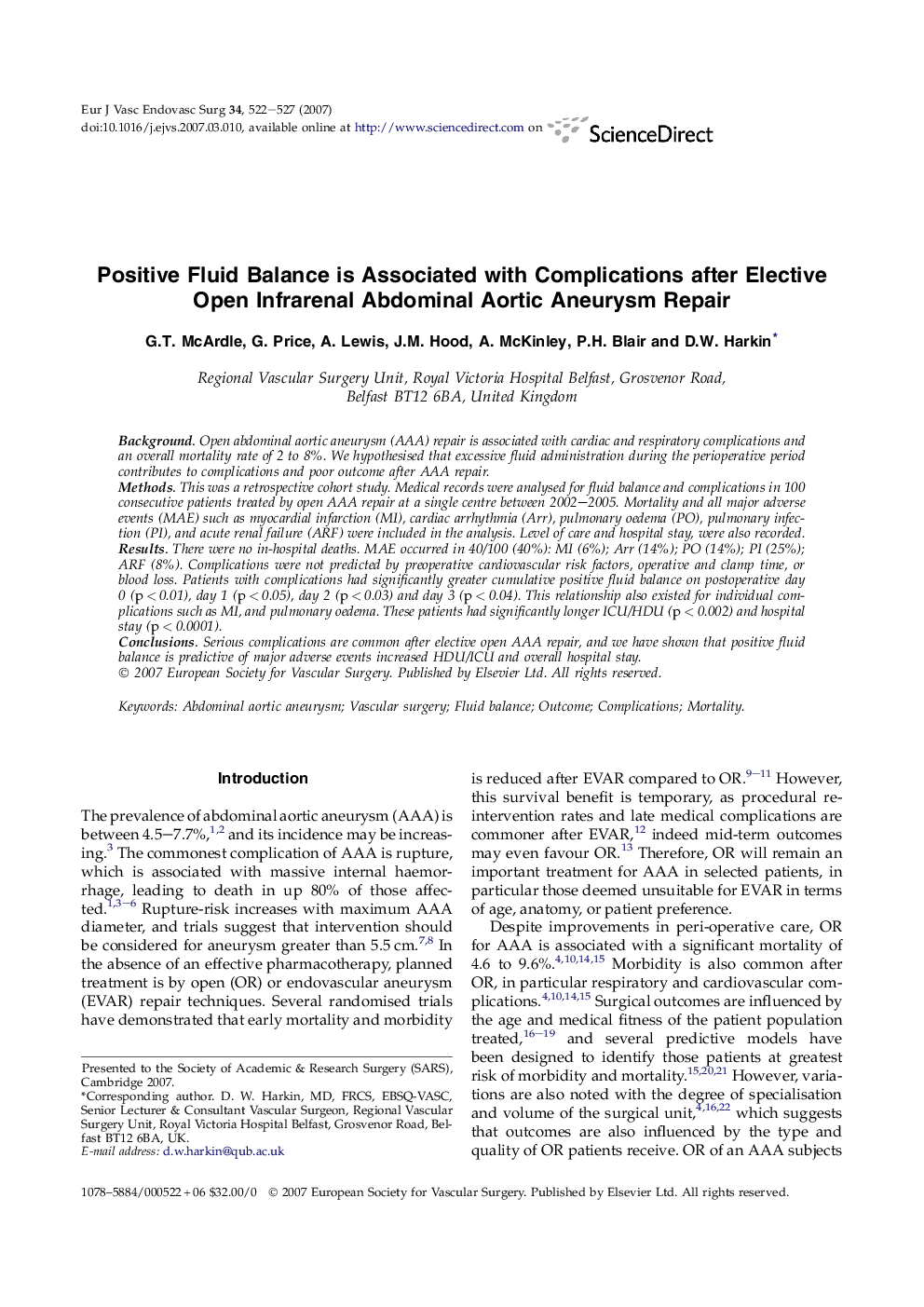| Article ID | Journal | Published Year | Pages | File Type |
|---|---|---|---|---|
| 2914181 | European Journal of Vascular and Endovascular Surgery | 2007 | 6 Pages |
BackgroundOpen abdominal aortic aneurysm (AAA) repair is associated with cardiac and respiratory complications and an overall mortality rate of 2 to 8%. We hypothesised that excessive fluid administration during the perioperative period contributes to complications and poor outcome after AAA repair.MethodsThis was a retrospective cohort study. Medical records were analysed for fluid balance and complications in 100 consecutive patients treated by open AAA repair at a single centre between 2002–2005. Mortality and all major adverse events (MAE) such as myocardial infarction (MI), cardiac arrhythmia (Arr), pulmonary oedema (PO), pulmonary infection (PI), and acute renal failure (ARF) were included in the analysis. Level of care and hospital stay, were also recorded.ResultsThere were no in-hospital deaths. MAE occurred in 40/100 (40%): MI (6%); Arr (14%); PO (14%); PI (25%); ARF (8%). Complications were not predicted by preoperative cardiovascular risk factors, operative and clamp time, or blood loss. Patients with complications had significantly greater cumulative positive fluid balance on postoperative day 0 (p < 0.01), day 1 (p < 0.05), day 2 (p < 0.03) and day 3 (p < 0.04). This relationship also existed for individual complications such as MI, and pulmonary oedema. These patients had significantly longer ICU/HDU (p < 0.002) and hospital stay (p < 0.0001).ConclusionsSerious complications are common after elective open AAA repair, and we have shown that positive fluid balance is predictive of major adverse events increased HDU/ICU and overall hospital stay.
